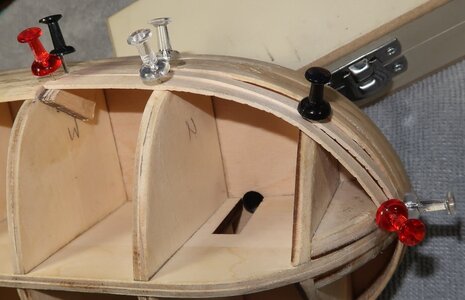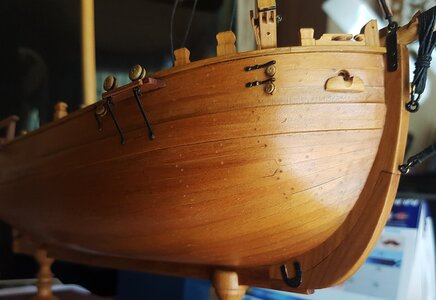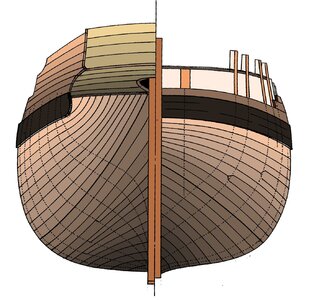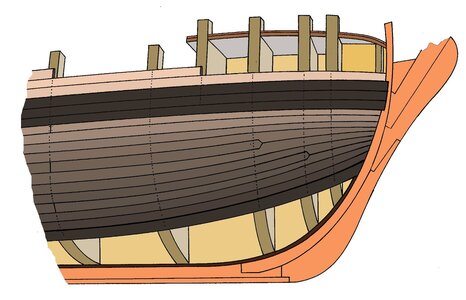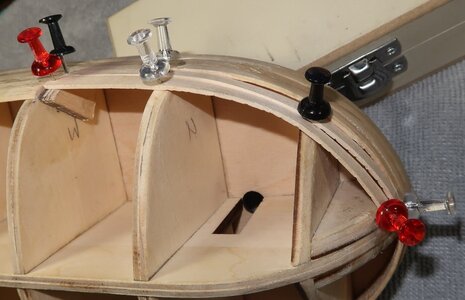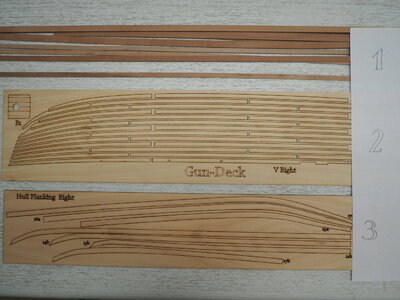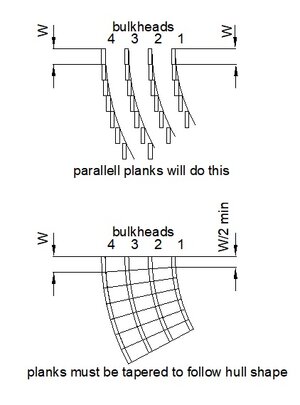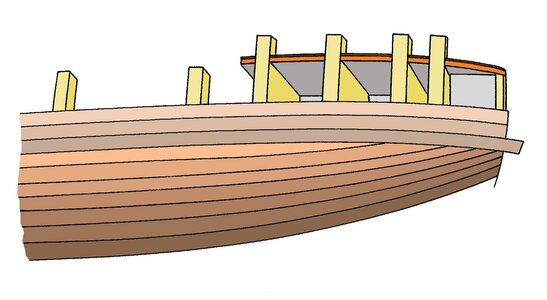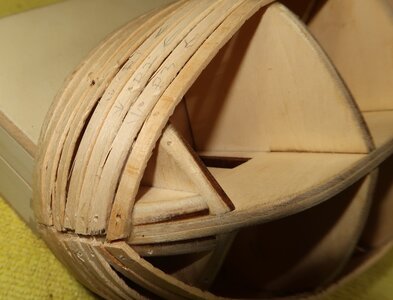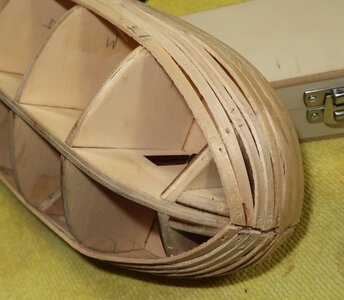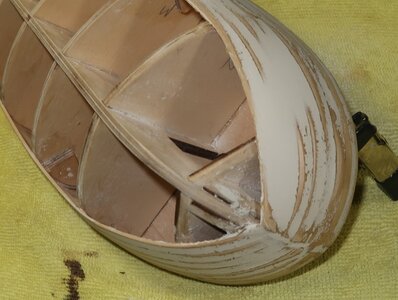I had hoped to start this build log after I got the first layer of planking in, but I ran into some trouble fitting the planking at the bow, nothing that can't be fixed, but I was hoping I might get some technique tips or other suggestions so as to avoid this on future builds.
As I started planking down the hull, it got to where I couldn't get the planks to make contact with bulkhead 1, they just bowed out too far. I think part of the problem is I removed too much material from the edge of bulkhead 1, as well as technique issues mentioned earlier.
I cut off the bottom three planks at bulkhead 3 and am in the process of fitting replacement planks. I'm getting better contact with bulkhead 1 but I'm getting this step affect on the planks between bulkhead 1 and the bow.
Easy enough filling all that in, but any tips or suggestions on getting a smoother line down the outside of those planks would be appreciated.
Thanks.
As I started planking down the hull, it got to where I couldn't get the planks to make contact with bulkhead 1, they just bowed out too far. I think part of the problem is I removed too much material from the edge of bulkhead 1, as well as technique issues mentioned earlier.
I cut off the bottom three planks at bulkhead 3 and am in the process of fitting replacement planks. I'm getting better contact with bulkhead 1 but I'm getting this step affect on the planks between bulkhead 1 and the bow.
Easy enough filling all that in, but any tips or suggestions on getting a smoother line down the outside of those planks would be appreciated.
Thanks.




